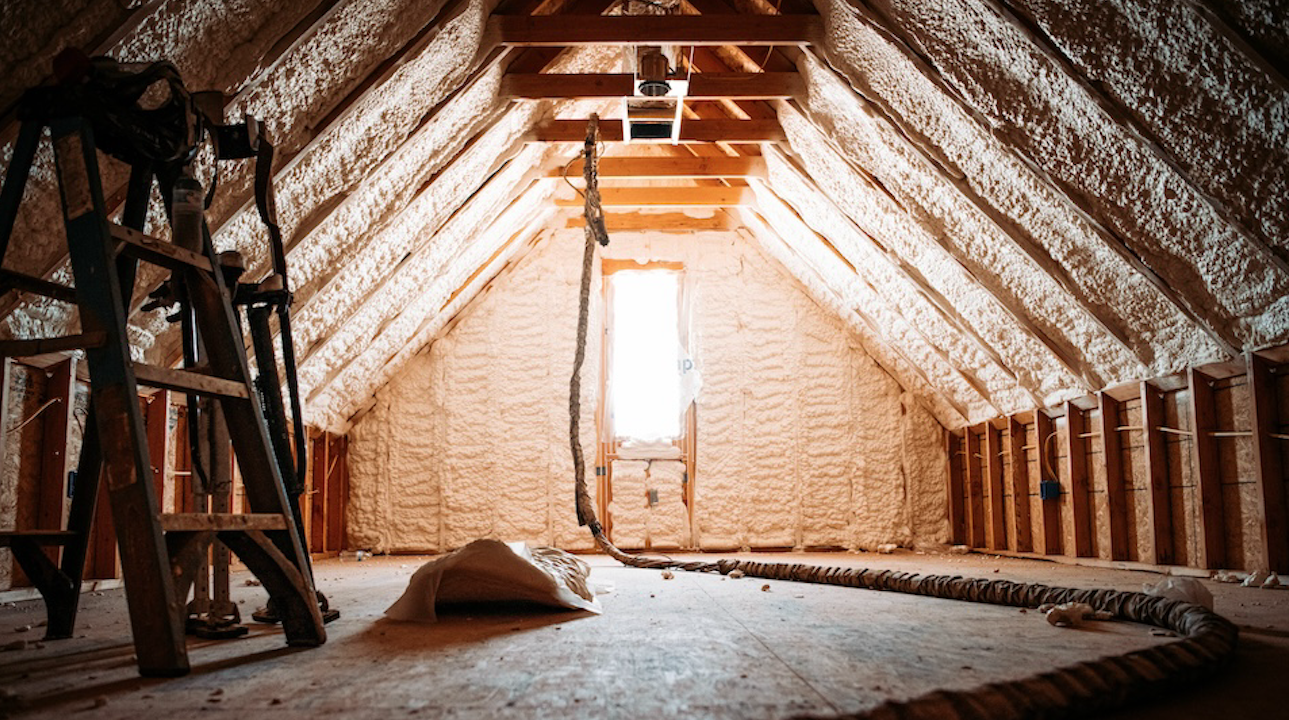Somewhere there’s a long list of expectations and improvements that custom home builders wish their building materials suppliers would make to the way they do business. In a recent survey by sister publication Professional Builder about builders’ and architects’ sentiments regarding their suppliers, many expressed a yearning for a personal relationship with suppliers that would help builders solve problems. Also high on the roster of desired traits: having suppliers who are knowledgeable about the business of new-home construction, and reps who listen to builders and understand their issues before they start selling.
But what could builders do to be better customers for their supplier partners? In a white paper about ways to build great and lasting vendor relationships, Ron Lewis, president of RB Lewis & Associates, a Chestertown, N.Y.-based consultancy for the construction industry, noted that builders and general contractors sometimes perceive material suppliers with contempt and blame them for poor performance rather than embracing suppliers as partners who add value. He wrote that occasionally the roots of poor supplier performance can be traced to “poor buyer performance,” such as poorly written purchase orders, last-minute demands for materials, constantly changing expedited orders, and claims that invoices reflect incorrect prices, among other things.
Decades ago, supply houses primarily perceived themselves as agents for the manufacturers or their wholesale vendors. But that business model started to change as some builders grew into national and multiregional companies, demanding terms and practices that would make their projects more efficient and cost-effective. Also, suppliers looking to differentiate themselves from their low price–driven competition sought to solve problems for customers by specifying products and services that could reduce waste and rework. Today, more lumberyards and building materials suppliers see their company as an extension of their customers’ home building operations.
“If I were a builder, I would be constantly soliciting ideas from my salesperson,” says Greg Brooks, president of Building Supply Channel, in New Albany, Ind., and editor of LBM Executive, a newsletter and blog about matters concerning the building materials supply channel. “Some salespeople are going to be very knowledgeable about what they can do to help you,” Brooks points out. “Other guys are not going to have a clue, and there are others who know what to do, but they think you don’t want to hear it from them.”
So is it the supplier’s duty to initiate collaboration or is the builder responsible for asking questions? Both parties have to push each other, which calls for clear communication and information sharing.
“We need to know where do we add value,” says Van Isley, CEO of Professional Builders Supply, in Morrisville, N.C. “Tell us, do you want our rep on the jobsite doing an interior trim take-off after he does a walk through on the doors, or do you not want that? For the lumber take-off, is it going to be handled by your folks or by our folks? We have access to resources that can do that cost estimating for you, but if you’re going to do it anyway, then there’s no reason to be redundant. That’s a cost that we can take out of the equation and share the savings.”
Brooks adds that if builders solicit suppliers for information about products and methods that can help them work more efficiently, two things will happen. First, the builder will get good ideas because the salesperson may be working with dozens of clients and learning from them what is and is not working in the field. Second, there are a lot of salespeople who don’t routinely stay up to date with those developments, but the fact that you’re asking is a clear message to them that that is what they should be doing.
“The best suppliers will almost always have a regular meeting or a quarterly meeting with the builder and say, OK, what can we do better—because if I can save you cycle time, eliminate waste, eliminate mistakes or reviews, you’re going to make more money,” Brooks says.
Price
Competitive pricing will always be a factor because a builder isn’t going to pay 10 percent more just because the builder likes the supplier, says Mark Scherer, chief operating officer of Scherer Bros. Lumber Co., a third-generation supplier serving Minnesota and western Wisconsin. “Everyone wants value,” Scherer says. “If we’re streamlining the process for [the builder] and they see the value they get, then great. Otherwise [builders] will defer to price. Price is always a factor, and we are committed to that. It’s a matter of how can we be competitive and eliminate some of the additional cost from the supply side.”
However, builders with a habit of hammering suppliers for price reductions won’t be endearing themselves to the channel. Indeed, Keith Coleman observes that his most profitable clients are those who spend less time shopping price and more time selling their houses and additions. “My favorites are the guys who trust us from a price standpoint and aren’t constantly shopping numbers and coming back to us, asking if we can do better,” says Coleman, CEO and owner of Hamilton Building Supply, in Hamilton, N.J. “There’s an understanding up front that you’re going to get a good number from us, and we’re going to do whatever we need to do for you.”
Getting On A Supplier's Good Side
Accurate Plans
“My favorite builders have really clear plans,” says Mark Scherer, COO of Scherer Bros. Lumber Co., in Minnesota. “They make it so my salespeople can do their jobs, can get them quality estimates, understand what they are doing, and actually give them an estimate on the front end that is spot on. I like to be a little high on my estimates to give customers some cushion, but I don’t want to be too high. So having well-drawn plans where you can actually build the house that the plan is stating you want to build is a big deal.”
Notice
When possible, a little notice can go a long way toward being a better customer. “We often ship same day and always next day, but there is nothing wrong with giving me a week’s notice when you know you’re going to need 150 sheets of plywood, so I can have them ready for you,” says Keith Coleman, CEO and owner of Hamilton Building Supply, in Hamilton, N.J. “That way no one else comes in at the last minute and takes some plywood, and now I have to scramble to get your 150 sheets because you only gave me eight hours’ notice. Whenever customers can give us advance notice, that’s tremendous.”
Returns
Picking up returns used to be a frequent cause of work-related injuries for Scherer’s employees because they would have to walk the jobsite to find return merchandise and pull it out from piles of material. Scherer worked with the builders’ subs,
usually the framing contractors, so the builder or the trades prepare, stack, and clearly label returns, making pickup easier. “I can come in with a piggyback forklift or a boom truck and grab what I need to grab and get it out of the way for them,” Scherer says. “That makes the project so much easier.”
Also, suppliers offer credit on returns that they can resell. Boards that have been sitting in the elements and come back with muddy boot prints would be rejected if that wood were to be shipped to the builder’s next job. Builders would do well to take care of potential returns so that material is in salable condition.
Delivery
On delivery day, make sure that vehicles belonging to the crew don’t block jobsite access. “When we can zip in, do what we need to do, and get back out of there, that puts money in our pockets and in the builder’s pocket, too,” Coleman says.
Communication
Coleman serves all comers no matter whether they fax in their order or walk into the supply house with a handwritten note. But he’s particularly fond of builders who use email. Coleman prefers it to texting, which is too brief. Emails are easier to forward and provide documentation of the dialogue. Because builders are dealing with so many issues and interruptions, they often omit details that Coleman needs to clarify. With email, he can quickly and more thoroughly ask and answer questions on the spot.
Among the value-added extras included with Hamilton Building Supply’s numbers are free deliveries, no order minimums, and no charge for returns. Those services, Coleman says, are among the tangible benefits for builders that pay dividends toward establishing trust and bringing some relief from worrying about whether his company is going to lose someone’s business because his quote was a nickel too high.
However, there are builders out there who think they have to shop every quote and get a firm price every 30 days, or they’ll secure 90-day pricing one time and 30-day pricing the next because they think they’re smarter than the market. Isley says that practice is not very productive. He’s seen customers rotate from one supplier to another, and suppliers eventually figure out that doing business with that builder is cost prohibitive. Yet his company’s biggest frustration is the customer who makes apples-to-oranges comparison between his quote and a competitor’s. The customer isn’t willing to dig into the details and see that his company is bidding with top-of-the line AdvanTech flooring as spec’d in the plans while the competitor is quoting run-of-the-mill ¾-inch plywood. The builder buys from the cheaper supplier and doesn’t realize there’s a problem until the floor is nailed down and the material is swelling and cupping.
“Once again, it comes down to who is going to win the take-off,” Isley says. “Is it the customer who sends the list [of materials] to the supplier, or is it the supplier? And if you give two suppliers a set of plans, chances are the take-offs are not going to be the same, so right out of the gate you’re not comparing apples to apples. If the customer does it, and he sends the list, is he taking time to compare the lists to make sure that the spec is the same and the quantities are the same? In most cases, the builders are moving fast, and they’re not willing to do that.”
Preconstruction
Nothing destroys a construction schedule faster than forgetting to order the windows, the counters, or whatever. Consequently, the project runs late because delivery is pushed out. A supplier salesperson’s job is to manage the flow of materials to the jobsite, according to Brooks, so that person knows that if a builder is framing today, the project is going to need windows in a certain number of weeks. When it comes to scheduling, suppliers find it immensely helpful when builders include them with the subcontractors in a preconstruction meeting.
One common scenario that could be avoided if the supplier had an opportunity to talk with the builder’s framing subcontractor at a preconstruction meeting involves misusing the sticks in a lumber package. Even though the package has the accurate quantity and lengths of 2x4s, the framers may pull out the 16-foot lengths and cut them down for where the 14 footers are needed. Eventually the crew runs short of 16s and find the 14s when they get to the bottom of the package, and the builder has to order more lumber.
“I would say it is unusual to see [preconstruction meetings] happen routinely, but it does happen when the builder and supplier are working together for a long time and the supplier has had a chance to learn what the builder wants and where the usual breakdowns could occur,” Brooks says.
Several builders do invite Scherer’s sales reps to preconstruction meetings, and he wishes more customers would do the same. “For me, the most successful customers and the easiest customers to deal with are the ones that engage us in the design process,” Scherer says. “If I can be on the front end looking through the plans as they are going through them, we can make a lot of suggestions and eliminate a lot of problems down the road, but only if we are part of the process.”
Scherer’s company typically participates as the truss supplier and will attend preconstruction meetings along with HVAC subs, plumbers, framers, and electricians to scrutinize a plan. Occasionally, Scherer’s people catch something that could stop a project for half a day or introduce a change that will help the crew avoid reworks.
“That’s just taking that whole definition of communication to another level because it’s anticipatory; it’s proactive,” Scherer says. “I love it when my customers communicate when they see a problem, and we work through it. If we eliminate the problem before it exists, that’s huge. We save the builder a lot of money, and it saves us a lot of stress.”
Customers who invite Hamilton Building Supply reps to a preconstruction session often receive valuable engineering or logistics suggestions that can make everyone’s life easier. For example, Hamilton may make suggestions for building materials staging on the jobsite, ensuring that materials are close to where they are actually going to be used, and arrive on site when they’re needed. “Everything is about efficiency today,” Coleman says, “and as long as you give us an opportunity to comment, a lot of times we can bring in additional efficiency.”
Isley adds, “There’s got to be give and take on both sides, but it comes down to collaboration. What are your problems, how can we help you solve those problems, and what do you need? What role can we play that adds value and minimizes distractions? Those are the kinds of things that we are able to bring to the table. We don’t know the answer to those questions. You know the answers. We can show you what we’ve done for other people. We can show you what we can do that we think will be beneficial, but it has to fit your process.”













